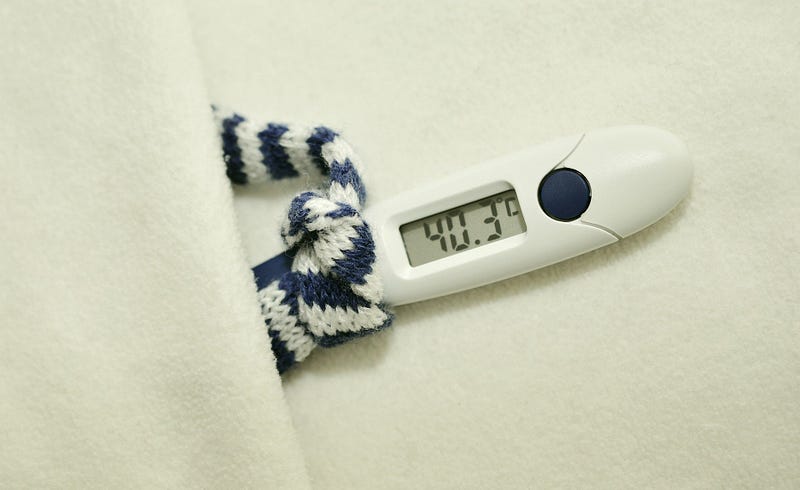Fire in the Body!
By Brian Cho, Bioengineering 2023

When a person becomes ill, strange things start to happen. They feel hot, yet cold. Their surroundings start to feel different and moving a muscle seems to take too much energy. But the question should be why this happens? Does the disease plaguing the person cause such a strange reaction? And how exactly does this affect the rest of the body?
A fever is defined as an abnormally high body temperature, usually accompanied by shivering, headache, and delirium. Despite how they seem, fevers are the body’s own defense mechanism. The human body’s response to damaging infections often comes in the form of a fever, which is part of the inflammatory response.
The inflammatory response is activated by physical damage or by the release of signal chemicals when pathogens enter the body. One of these chemicals is histamine, which is stored in specialized cells known as mast cells. Mast cells are found in connective tissues — epithelial or muscle tissues — and when injured release histamine to trigger the dilation of blood vessels in an effort to increase permeability of nearby capillaries. This has two major effects. One is that blood flow to the area increases because the vessels become wide enough to accommodate more fluid and cells. The second is that immune cells from neighboring areas are able to move to the infection site more quickly and begin exterminating the pathogens as soon as possible, minimizing the time that bacteria have to proliferate without interference.
Increasing body temperature speeds up tissue regeneration as well as the body’s immune responses while denaturing the pathogen’s proteins, ultimately slowing their infection rate.
But how can this happen to the entire body? While minor injuries only cause local inflammation, more major infections like the common cold or pneumonia overstimulate the body, increasing the number of white blood cells substantially. The body’s temperature begins to rise because of the substances produced by injured cells and pathogens. By doing this, the body is actually ridding itself of the infection. Increasing body temperature speeds up tissue regeneration as well as the body’s immune responses while denaturing the pathogen’s proteins, ultimately slowing their infection rate. Phagocytosis, which is when white blood cells ingest other cells to destroy them, increases as well, helping the body kill off diseases as quickly as possible.
Fevers ultimately lead to a faster recovery as they kill off pathogens and help the body repair itself. They remain an essential part of the body’s defense system, acting as a furnace to drive reactions forward and denature pathogenic compounds.
